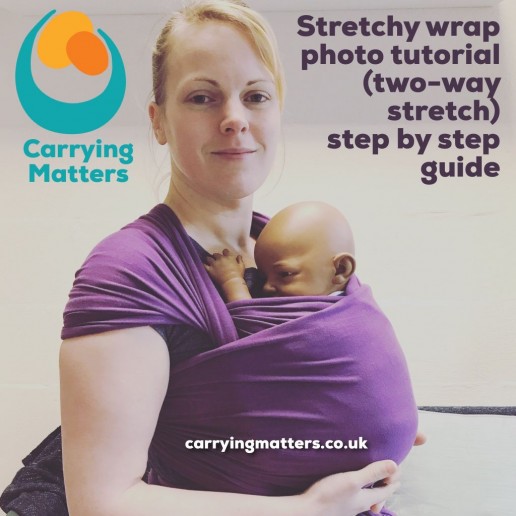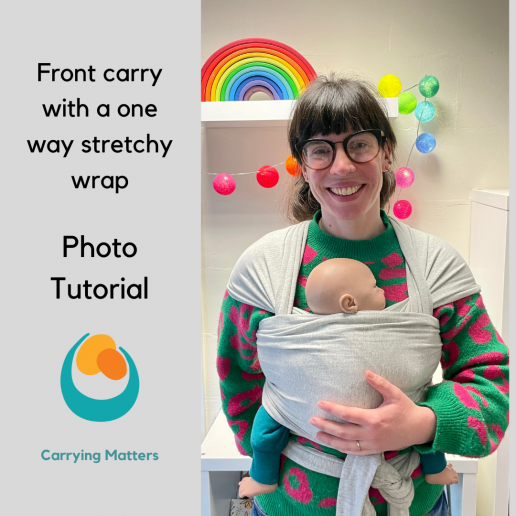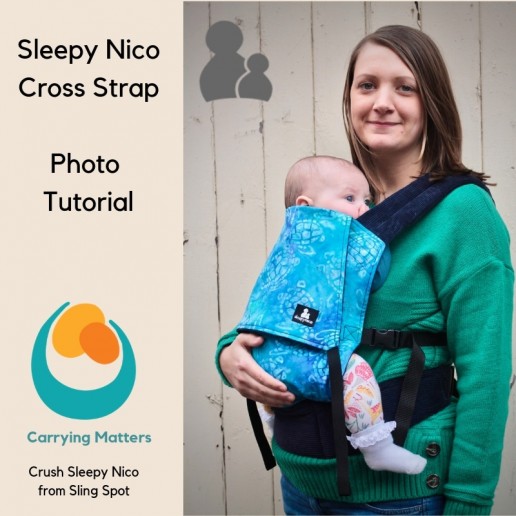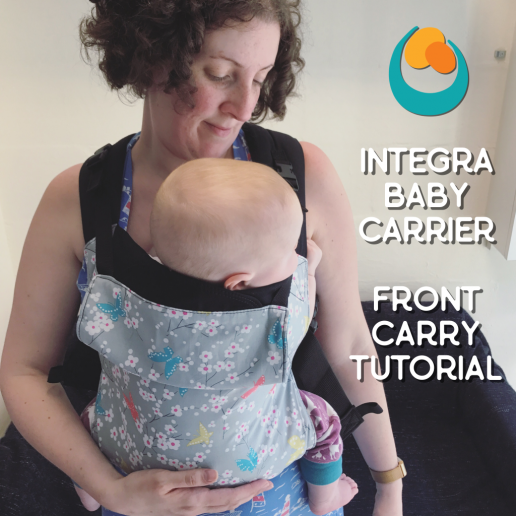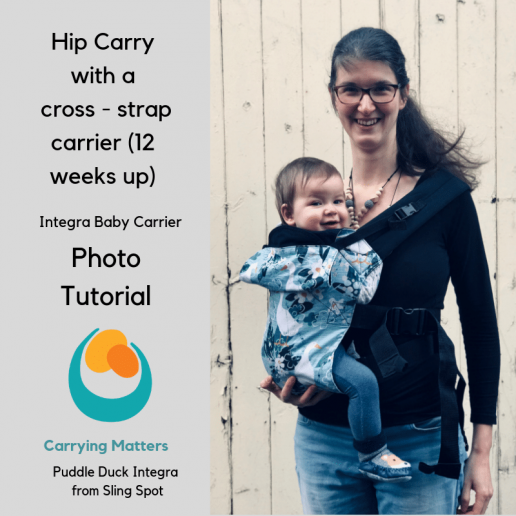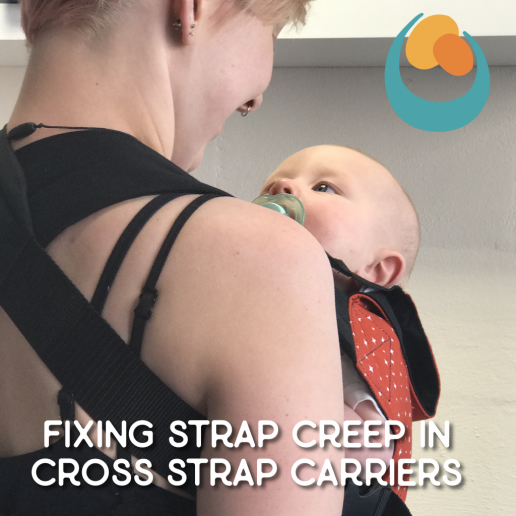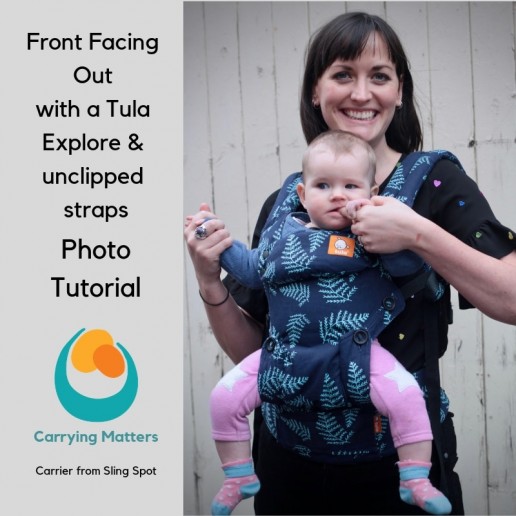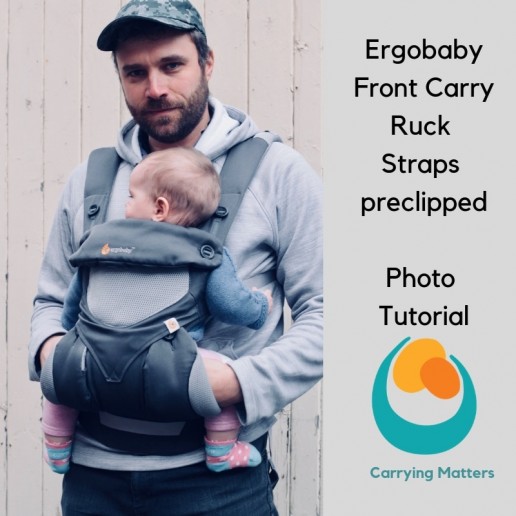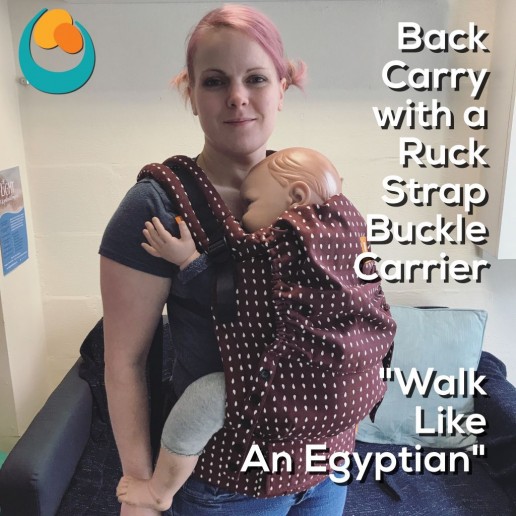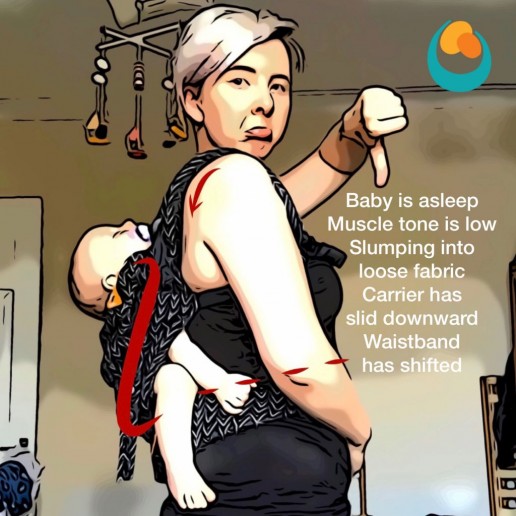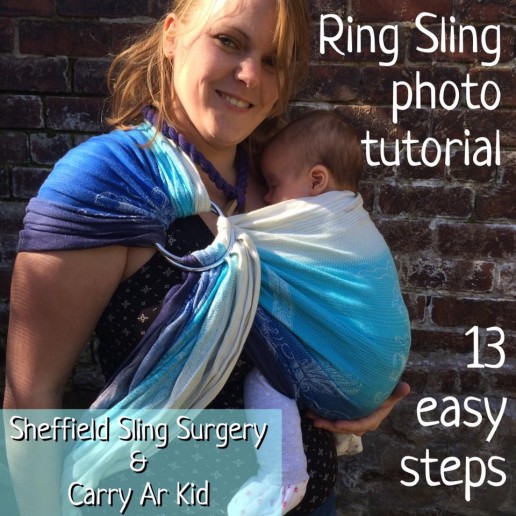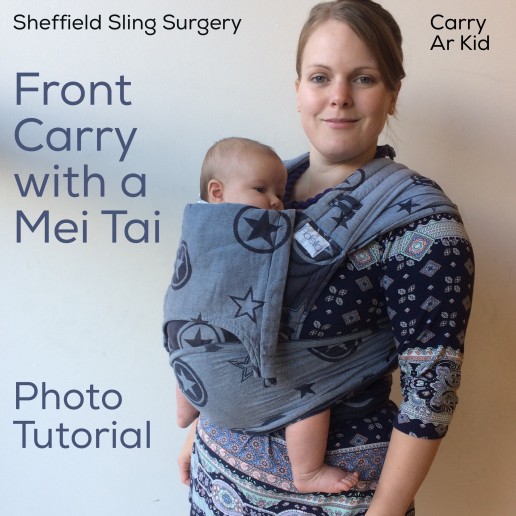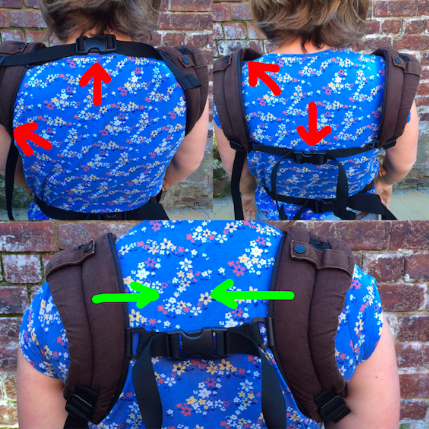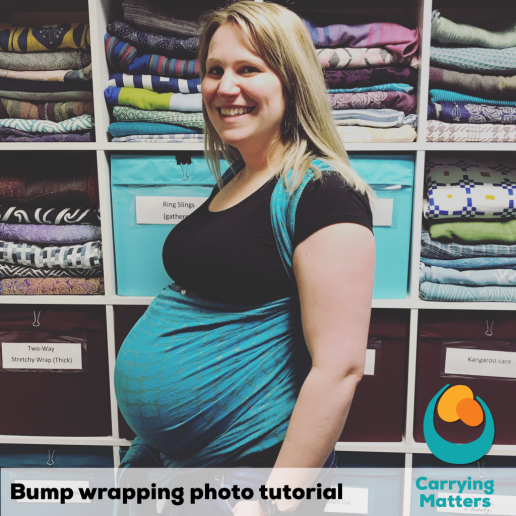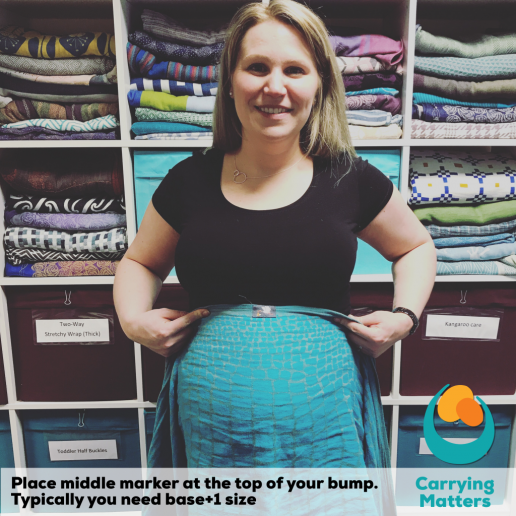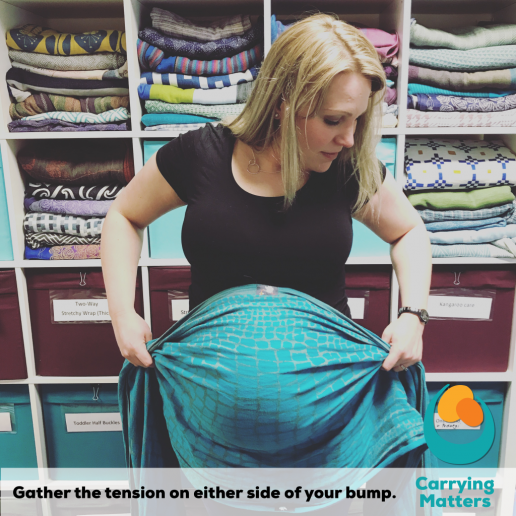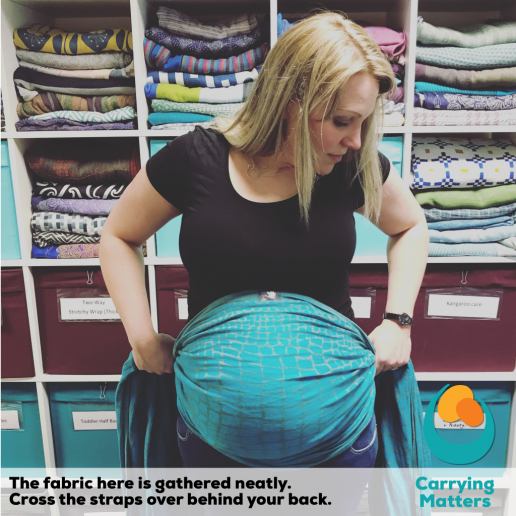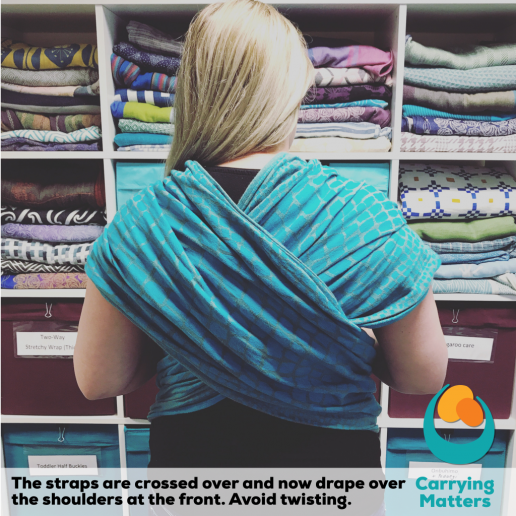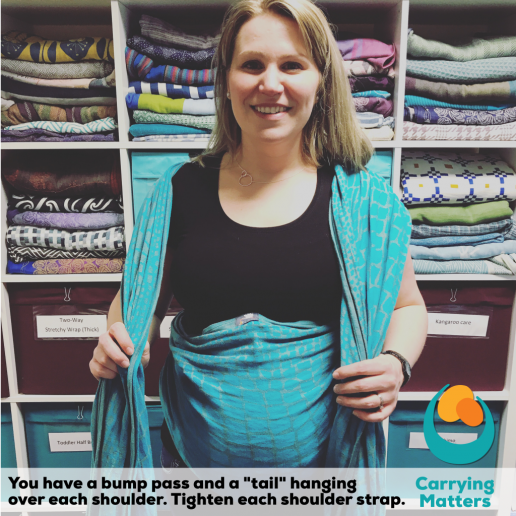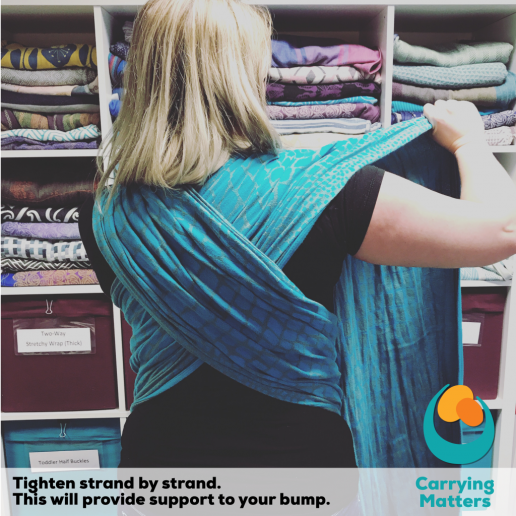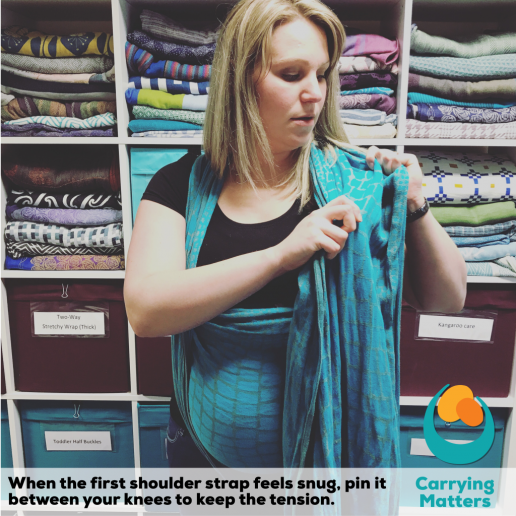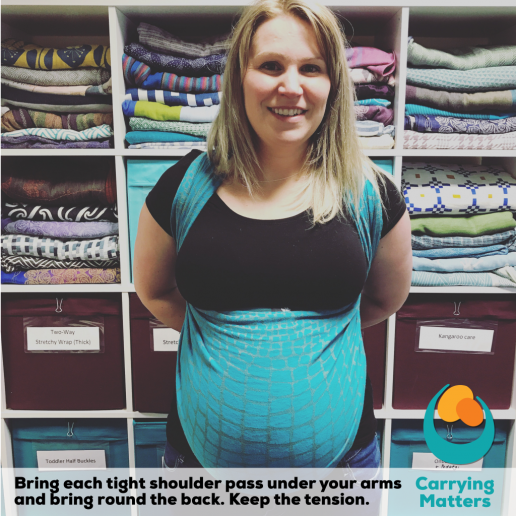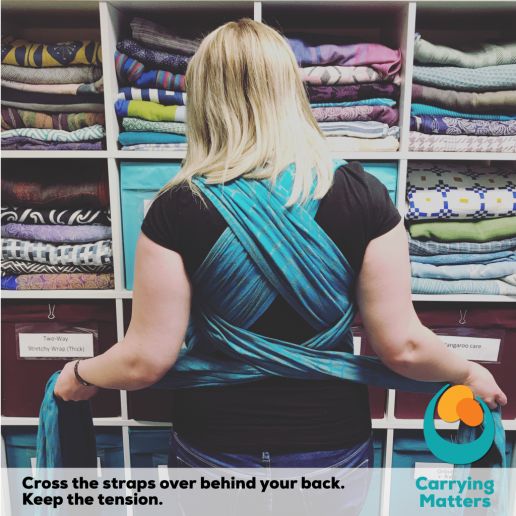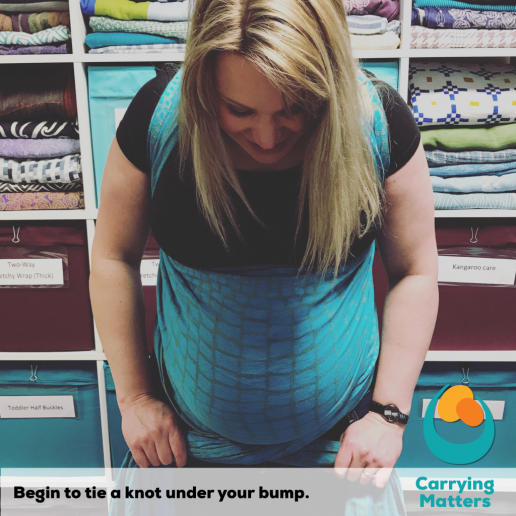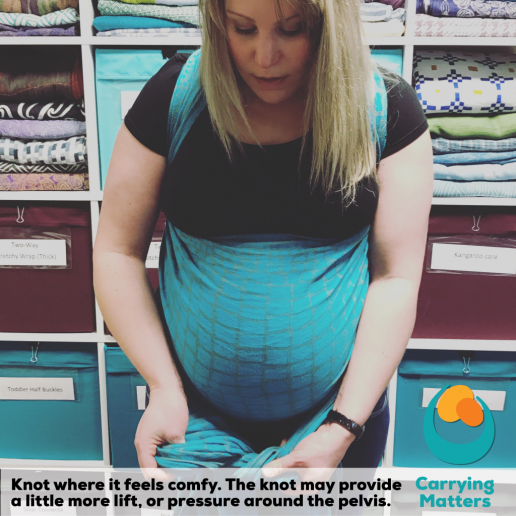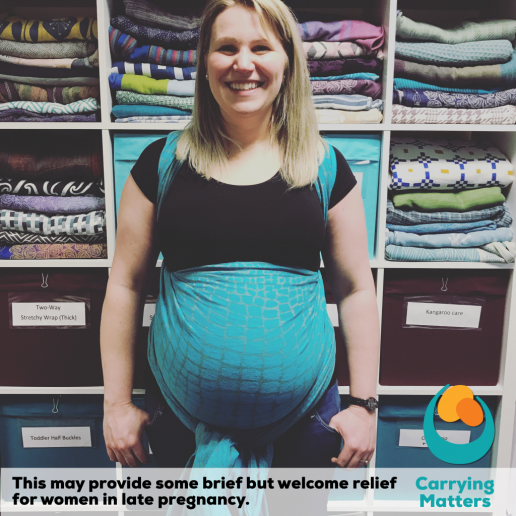Top FAQS
These are the most common questions about babywearing I am asked, in a single helpful list!
Just click on the links to read the relevant blog posts, some are kindly shared from others
Firstly; some of my most popular articles:
Do the babywearing “rules” really matter?
Babywearing and infant mental health
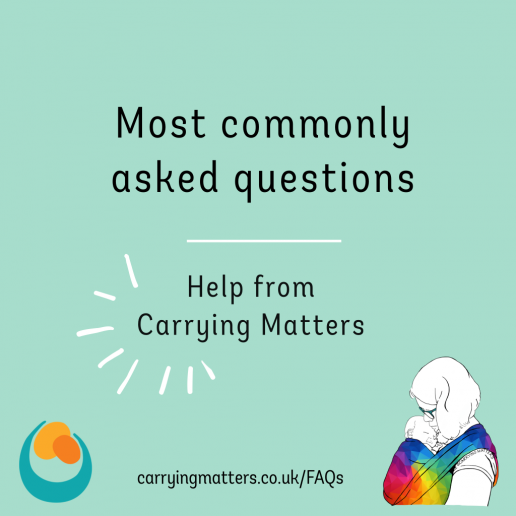
Secondly, I get this query daily. “Can I use your infographics to support families?” ABSOLUTELY! Everything on this website was created to help families with children to feel close and connected. Please credit me appropriately and link back to my website/social media (facebook, instagram)
Here is the link to the infographics (eg the Fourth Trimester/Build a Happy Brain/Why Carrying Matters/Skin to Skin posters, safe carrying images and much more)
Here is a search box to help you find what you’re looking for.
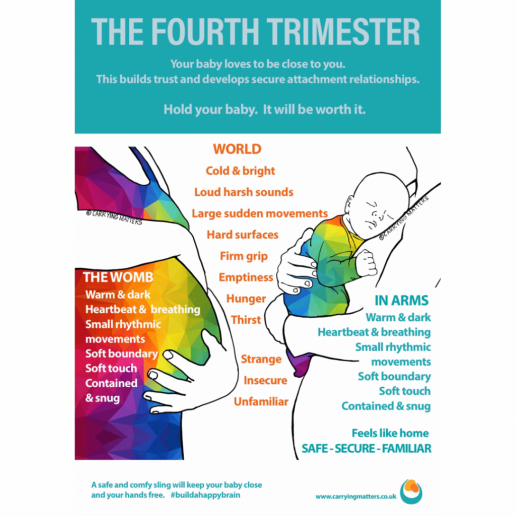
Getting started, and learning the basics
What kinds of sling are there and how do I use them? (links to the major types with useful guides, videos and troubleshooting)
How do I keep my baby safe in the sling?
Babywearing with a Newborn
What are the benefits of babywearing for my baby?
Are there any benefits for me too?
What are the best newborn sling options? (Coming soon)
How soon after birth can I carry my baby and what if I have had a Caesarean Section?
My baby’s head is so wobbly in the sling!
How high should my carrier be?
Can I carry my premature baby?
How do I protect my postnatal pelvic floor and babywear?
What about if I have a prolapse? (Thanks to Forest of Dean Slings)
Help! My child cries in the sling!
Does babywearing help my mental health?
Are slings useful if I have a perinatal mental health challenge?
Carrying in different circumstances
Can I sleep while my baby sleeps in their carrier?
How do I carry more than one child at a time?
How can I carry safely in hot weather?
How do I keep my baby warm while carrying in the cold? (ie can I put them in a snowsuit?)
How do I keep myself and baby dry when babywearing in the rain? (Coming soon)
Carrying adopted or foster children
What if my child has a disability? See this link for a stories from families living with a range of specific conditions.
Common safety queries
Will my sling hurt my baby’s hips?
What if I fall while babywearing? (Coming soon)
Useful Videos
I have made several educational useful videos and photo tutorials to help people, which can be browsed on my own YouTube channel (basic babywearing how-tos and vlogs) as well as a wide range on my local Sheffield YouTube channel (I run a sling library there).
I am adding more and more short videos to my Instagram reels and IGTV, link here.
If you are looking for a specific video for a particular type of sling, please see the categories below.
I would highly recommend a look at my safe carrying page for guidance on how to keep your child safe in a sling.
Here are some safety reminders, please ensure you know how to protect your baby’s airway and ensure a good position for them before you use a sling.
Please note that these videos are to be used at your own risk. There is no substitute for hands-on help! Always keep your child safe.
Here are some reminders of the positioning of babies and children in carriers.
Young babies should be held in this supportive tucked position that respects their natural anatomy. The M shape describes the shape of the legs; with knees higher than bottom. This is how babies naturally position themselves when they are relaxed and held in arms, or resting on the floor or in reclined seats. A newborn has a much narrower M shape than an older baby (and each baby will open his/her hips at his/her own pace).
The J shape describes the shape of the head and spine; a gentle curve with the pelvis tucked under. Having a tuck at the base means that the heavy head is less likely to slump over. Chin can be kept up and the chest cavity kept open and uncompressed.
Here is a reminder about the Pelvic Tuck (with videos)
Carries with a Stretchy Wrap
Many parents love to use a stretchy wrap for their newborn; it is very comfortable as it distributes the weight widely around the body . It is also very snuggly for babies and reminiscent of the warmth and gentle pressure all around that they enjoyed in utero.
They are not hard to use; these videos will show you how to put stretchy wraps on safely, how to fix them if baby feels too low, and how to use the stretchy as a breastfeeding aid without needing to remove the sling (please note the safety advice in that video!)
Silent, captioned video with baby, showing you how to put two-way stretchy on and how to put baby in
Voice and video with doll, showing you how to ensure good positioning every time.
LIST OF VIDEOS WITH A STRETCHY (INCLUDING SAFE FEEDING)
-
-
-
-
- Pocket Wrap Cross Carry with 2 way stretchy, showing how to avoid slumping (with real baby, captioned)
- Slower video of how to avoid slumping
- Video of Taking baby out of stretchy wrap
- Pocket Wrap Cross Carry with legs out, talking and captioned (Two way stretchy, eg Hana Baby, Boba, JPMBB etc)
- Photo tutorial of two way stretchy with preflipped shoulders (helps to ensure good airflow)
- Video of preflipped shoulder straps
- Video of flipping the shoulders at the knee pits, in two ways
-
-
-
-
-
-
-
- Using a stretchy as a breastfeeding aid with a young baby (not hands free carrying)
- Fixing a stretchy wrap that has slipped
-
-
-
-
-
-
-
- An audio and captioned video of a two way stretchy wrap by Abby (Noah’s Arc Sling Library) and Harriet (Sheffield Sling Surgery)
- An Audio Description of how to put a two-way stretchy on and how to put baby in, by Harriet (Sheffield Sling Surgery)
-
-
-
How to breastfeed a baby using the stretchy wrap as a supportive aid
Ensuring a good pelvic tuck position with a stretchy wrap
VIDEOS OF ONE-WAY STRETCHY WRAPS and OTHER TWO-WAY CARRIES
Pocket Wrap Cross Carry with a one way stretchy wrap (eg Scottish Baby Box wrap, Happy, Moby, etc)
Front Wrap Cross Carry with a one way stretchy wrap (often much easier to do and feels more secure!)
Slingababy video of Front Double Hammock with a Moby (one way stretch)
Video for front double hammock with a Didymos (not very stretchy!) stretchy wrap, for babies who prefer legs in, or have not yet uncurled
Je Porte Mon Bebe video for front double hammock (any two way stretchy, with a baby whose legs have not yet uncurled)
CARRIES WITH A CLOSE CABOO
Close Caboo Front Carry, talking, captioned
Another of Rosie’s videos of a 4week old baby in a Close Caboo, silent, captioned
Photo tutorial of the Close Caboo
Taking baby out of the Close Caboo without waking (talking, captioned)
Soft Structured Carriers (Buckles/Tie Straps)
The videos in this section look at soft structured carriers (full buckle carriers and meh dais/bei dais (formerly known as mei tais), showing you how to use them for front, hip and back carries, as well as how to make a good seat in a carrier with the pelvic tuck.
FRONT, HIP AND BACK CARRIES WITH A WAISTBANDLESS CARRIER (eg Integra/Connecta/Pouchlings etc)
Front Carries with a waistbandless carrier
-
-
-
-
-
- Front carry with an Integra with a newborn baby who does need the cinching strap (silent, captioned)
-
-
-
-
-
-
-
-
-
- Front carry with an Integra with an older baby who does not need the cinching strap (silent, captioned)
-
-
-
-
-
-
-
-
-
- Photo tutorial with an Integra, nine month baby
- Front Carry with a Connecta with an older baby who does not need cinching, showing how to tighten
- Two Front carries with Connecta with a small baby, using cinch strap, and rolling the waist (please note the rolling is not officially endorsed)
- Fixing “strap creep” where the straps get too close to the neck photo tutorial
- Fixing shoulder straps too close to the neck with a cross strap carrier video, talking
- Fixing a carrier that feels low and loose video, talking
- Breastfeeding in an Integra baby carrier
-
-
-
-
-
-
-
-
-
- FWCC style carry with waistbandless carrier (spreads the top edge of panel more widely and brings knees higher) please note this is not officially endorsed.
-
-
-
-
Hip and Back carries with a waistbandless carrier
-
-
-
-
-
- Hip Carry with a cross strap full buckle carrier) – two methods (please note this is not officially endorsed)
- Back Carry with an Integra/Connecta
-
-
-
-
FRONT CARRIES WITH WAISTBANDED CARRIERS (CROSS AND RUCK STRAPS)
Front Carry with a Waistbanded Cross Strap Carrier (Sleepy Nico, Mamaruga, Beco, etc)
Front Carry with a Rucksack strap carrier (Tula, Boba 4G, Lillebaby, Emeibaby, etc)
Raising baby up in panel if baby is too short for it – photo tutorial
BACK CARRIES WITH BUCKLE CARRIERS
-
-
-
-
-
- Back carry with Hip Scoot (done here with a Connecta/Integra)
- Secure Hip Scoot and Back Carry with a Full Buckle method 1
- Secure Hip Scoot and Back Carry with a Full Buckle method 2
- Back Carry with the secure chestbelt done up (wrapyouinlove video) “walk like an Egyptian”. Ensure chest belt is strong and secure.
- Photo tutorial for “walk like an Egyptian” method with rucksack carrier
- Back carry with cross straps on the front! (starting from the beginning with child not in the sling). A very secure way to do a back carry for beginners. This needs the carrier to have detachable straps for crossing (ie not only rucksack straps)
- Switching a front carry with a cross straps into a back carry with cross straps (child is already in position on the front)
-
-
-
-
Watch Rosie do a quick back carry with a preschooler and a waistband carrier (works well for willing older children!)
CARRIES WITH A MEH DAI/HALF BUCKLE
Front Carries with a Meh Dai/Half Buckle
-
-
-
-
-
- Photo Tutorial for Meh Dai front carry
- Front Carry with a Meh Dai with baby
- Front Carry with a Meh Dai with toddler
- Front Carry with a Newborn in an adjustable waist Meh Dai (eg Hop Tye) video by Rachel from the North East Sling Library
-
-
-
-
Hip/Back Carries with a Meh Dai/Half Buckle
Ring Sling Carries
Ring slings are a popular choice with parents wanting something simple yet versatile, and they can be used from newborn to toddlerhood and beyond. There is often a learning curve to making them as comfortable and safe as possible; the videos in this section will show you how to use them well. Practice makes perfect and sometimes some one-to-one help can make all the difference. Here you can enjoy a video as if you were having a consultation how to use a ring sling with Rosie and Lucy.
CARRIES WITH A RING SLING
-
-
-
-
-
- Ring Sling Photo Tutorial with baby
- Ring Sling prep and legs out Tummy to Tummy Carry with a newborn (creating rolled neck cushion) – See the embedded video above
- Slingababy‘s excellent ring sling preparation and hip carry (with toddler)
- Ring Sling front carry with rings on the back and a twist in the fabric
- Off centred front carry, paying attention to airway (please note this is NOT a cradle carry)
-
- How to thread a no sew ring sling (with two rings) (external video)
-
-
-
-
Carries with a Woven Wrap
Woven wraps are very versatile and can be used for children of every age, from newborn to preschooler, on the front, hip and back. They come in several different lengths –read more here.
In this selection Rosie demonstrates just a few of the possibilities and links to other excellent videos to help you make the most of your woven wrap.
FRONT CARRIES WITH A WOVEN WRAP
-
-
-
-
-
- Knotless Front Cross Carry (Slingababy)
- Front Cross Carry (unflipped shoulders – Wrapping Rachel)
- Front Cross Carry with flipped shoulders and deep seat -Wrap you in Love)
- Photo tute of the Front Cross Carry
- Front torso rebozo (size 3)
- Kangaroo Hip Carry (size 3)
-
-
-
-
HIP CARRIES WITH A WOVEN WRAP
BACK CARRIES WITH A WOVEN WRAP
Sheffield Sling Surgery videos
-
-
-
-
-
-
-
-
- Knotless Ruck with sz 2 woven wrap and a large toddler
- Short Back Cross Carry with a woven wrap size 2
- Reinforced Ruck – by Lindsey, with a woven wrap sz 3
- Knotless Double Hammock with sz 4 woven wrap
- Double Hammock with a sz 5 woven wrap (L Pull) (yes she does fall asleep!)
- Ellevill Jordan’s Back Carry, good for leg straightener children, sz 5 woven wrap (happy happy happy)
- Ruck tied Tibetan with sz 6 woven wrap and large toddler
- “Pouchless Ruck” with two cross passes with a size 4 woven wrap – without making a deep seat
Other videos
-
- Back Wrap Cross Carry by Babywearing Faith
- Back Wrap Cross Carry with Tibetan finish, slow and precise, by Slingababy
- Secure High Back Carry by Wrapping Rachel
- Slingababy double hammock from a hip scoot (very clever way of doing it)
- Saltwater DH with knotless finish
- Charlie’s Cross Carry with Ring Finish – other variants here
- Christina’s Ruckless Back Carry by Wrapping Rachel
- Wiggle Proof Back Carry with Sweetheart Neckline and ring finish
My favourite woven wrap YouTube channel is Hedwych’s Wrap you in Love, a real treasure trove.
The Wearing Wiki of woven wrap carries
-
-
-
-
-
-
-
Your own local sling library/consultant for more support can be found at the Sling Pages
Using a newborn insert with a buckle carrier tutorial
Some buckle carriers require an insert for use with newborns, as the panel is too tall and wide for a small baby. The insert raises baby up inside the panel to ensure they remain close enough to kiss with an unobstructed airway. It also creates a narrower seat for baby to rest on, while preserving the M shape and hip health.
Follow the steps to ensure a safe and snug carry; the time spent preparing really pays off when baby is put in, meaning it will feel more secure right away, and less fiddling and adjustments will be needed later.
Front carry with a Close Caboo photo tutorial
The Caboo is a great option for those who enjoy the snuggly feel of a stretchy wrap but prefer a little pre-structure. This front carry with a Close Caboo photo tutorial will get you off to a flying start.
Follow the steps to ensure a safe and snug carry; the time spent preparing really pays off when baby is put in, far less fiddling and adjustments!
Read more about carrying newborns in stretchy wraps or Close Carriers here.
Photo tutorial for raising baby up in a too-tall panel carrier to ensure free airflow
This tutorial shows raising baby up inside a panel carrier when the panel is too long, ensuring good airflow and free movement of the head.
This is important, as young babies have a large occiput (the round bone at the back of the skull) and if this is under pressure from behind, the head will tip forwards, pressing baby’s chin onto their chest and downwards into cleavage, which can present an airway risk. The fabric should never come higher than the bottom of baby’s earlobes, so they can move their heads freely. All the head support should come from the upper back part of the panel.
Help! My child cries in the sling
"Help! My child cries in the sling... she seems to hate being put into it..."
This is a frequent worry faced by many parents when they try out a baby carrier for the first time - either the very first sling they have ever used, or when trying to find something more suitable or comfortable for their child's needs as well as their own. I've come across many parents who are concerned that their child unfortunately hates the carrier they have spent money on, or convinced that there is no sling out there that will suit their baby as they always cry when they are put in.
Fear not - it is very common for babies and toddlers to fuss and cry and wriggle in slings, especially when it is a new experience, and my advice to parents in these circumstances is "don't worry, this is very common, you are not alone" and "yes, there are solutions". Crying in slings is common.
So why is it my baby cries as soon as I put her in a sling?
I think the key thing in such situations is to try and understand the experience the child is having - to put yourself in their shoes (or booties!)
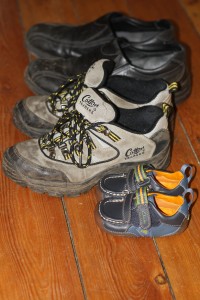
Being able to see things through a baby's eyes can often explain a whole host of issues - babies are small people with feelings just like adults, and they express these sensations in the more limited means they have at their disposal - laughing, wriggling, crying, bouncing, sucking, moaning, yelling, chewing, rooting, leaning, twisting etc. Being able to read and understand your baby's cues is vital to a good relationship and this is one of the benefits of a carrier; parents and carers are usually much more aware and rapidly responsive to a child who is close to their bodies and visible, as opposed to one who is detached and in a pram or a bouncy chair or a play gym etc. So it is good, your baby is protesting, he/she is communicating with you and you are aware of that! Now to meet the need he/she is expressing and thereby solve the problem.. The sling itself is usually not the cause of baby's displeasure.
What does your baby need?
- Is your baby too hot? (it is common to get very warm in a sling quickly. Your own body heat next to a baby's with the extra layers of the sling will bring their temperature right up, and we all know its unpleasant to be sweaty and over-dressed.
- Is your baby thirsty?
- Is your baby hungry? It is always worth making sure your baby is well fed before wyou embark on a new experience - and come armed with bottles, snacks etc to satisfy any hunger. It is usually worth meeting this need rather than ignoring it, as babies won't understand your priorities and will just continue to be upset. If you’re learning how to use the sling with someone, they will be more than happy for you to feed your baby - you are more likely to be able to absorb information when your child is happy. You can talk while feeding and still learn and you will always be able to try the carrier again later! Babies who are breast-fed may need to feed often, and few will refuse food that is offered, even if they've just been fed. Bringing a baby close to a chest full of milk will often create a desire to be fed, or to suck, even if tummies are full.. if you were a baby who could smell milk and were being held in a position where you couldn't reach, it would be maddening, and you might kick, or wriggle, or yell.) If your baby seems to be burrowing down, or chewing their fingers, or shaking his head from side to side, could that be a cue to be fed? Perhaps you can learn to feed in the sling?
- Does your baby have a sore tummy or is he too full of food to tolerate pressure on his tummy, just like an adult after a large meal? A seated sideways carry may be more comfortable.
- Is your baby wet or dirty, and therefore uncomfortable, or are they needing to eliminate? Babies are very aware of their own bodily functions.
- Is your baby tired? Many babies have a fussy period before they go to sleep. You may already be aware of this tendency in your baby when they are falling asleep in bed, in the car, in the pram etc, the sling is no different. A baby may learn that slings often mean sleep and if he doesn't wish to sleep, may protest. A little rocking with baby in sling is usually enough to help them drift off. Sometimes the new experience of trying a sling can be too much stimulation for a weary baby and push him over the edge from tiredness to tantrum, just as it would if you tried to feed him, or change his clothes. A good guide is two new things in a row (so at a sling meet, just try two things!)
- Is your baby in pain? Teething can be uncomfortable; distraction by play is a great tool, and if a baby suddenly has less distraction he may become aware once again of the ache in his jaws. Abdominal distension from constipation or sore genitalia may affect carrying.
- Is your baby responding to how she is being handled? Primitive reflexes like the Moro reflex (that causes the limbs to spread wide and then grasp) or the Tonic Labyrithine Reflex (over-extension, ie back arching due to an unsupported backward-lolling neck) can make babies feel insecure and unwilling to settle into a sling. Lifting and holding your baby securely from both the upper body and below the bottom can help to calm them before moving into a carrier.
- Is your baby responding to how you feel? If you are anxious or irritable while handling your baby, he will pick up on your muscle tone, shaky breathing and jerky movements and become distressed as something feels wrong. Sometimes it is better to just try again later when you are in a better frame of mind.
- Could you and your baby have some difficulties connecting, due to such circumstances as a complex pregnancy or a traumatic birth history (regardless of the objective outcome)? A lot of your unspoken feelings about your unborn baby and how your child arrived in the world can significantly affect bonding later, as can prolonged separation in the first few days or weeks of life. The rate of post-traumatic stress disorder after birth is surprisingly high (up to 9%) and there are several studies that demonstrate that such stress can impair bonding. This could be because of prematurity or illness, it could be due to feelings of guilt that are hard to shake off, even if they aren’t justified. Family dynamics and expectations, especially if they are in conflict with deep biological feelings can also have effects on how babies are handled and responded to. Babies are very sensitive to the feelings of their carers and will react accordingly - your baby’s behaviour and distress could be a signpost to some of your own internal discord and pain. This is where midwives, postnatal doulas and the NHS Afterthoughts services etc can be very helpful indeed in guiding families to find resolution and healing and I do recommend getting some support if you think this may be you.
In summary, if you and your baby are feeling good before you start, you are likely to have a more positive experience, and the more positive associations that are built up, the sooner your baby will begin to trust, enjoy and even ask for the carrier!
What is your baby's personality?
This is an important aspect. I often meet people who almost expect their babies to become utterly still in a sling, and to remain very calm. Well, after all, they're being carried close now, in a giant hug. What's not to love? What's not to be happy about??
Well, not everyone appreciates all-over cuddles, especially if they are not tired, and if they want to be active. This is where understanding your baby's personality may be very useful... imagine you were playing happily and patting a colourful thing in front of you. All of a sudden you are lifted up and wrapped knee to neck in a giant warm bandage, or suddenly put into a carrier, possibly one where you can't see very well. Some babies may love this; and settle down to happy drowsiness (usually because they are ready for cuddles, or are familiar with a well loved sling). Others may enjoy the sudden change of height and scenery and being able to smell their carer. Others may feel annoyed at being taken away from their happy activity, or be cross about not being able to see, or feel too hot, etc and don't appreciate the abrupt change - these babies may strain and bounce and wriggle or cry in protest. Most children I meet are pretty active in some way - and it would be unreasonable to expect them to suddenly change from an active, inquisitive personality into a more docile, still and placid one, especially if the parent also stands strangely still, with their muscles all tense with anxiety about the use of the carrier and if baby will like it. "Mummy doesn't feel right, she's not soft and relaxed - this isn't good."
Remember as well, where is your child in their natural sleep-wake cycle? The more you're able to understand your baby's cues as they express themselves the more likely you are to be able to meet these needs before they feel they have to cry to be heard.
Tips to help you and your baby get used to a sling together
Practice makes perfect
Get confident with a demo doll first. Sling libraries and sling consultants are usually well stocked with weighted demo dolls which will allow you to figure out how to use the sling safely (remember the TICKS guidelines) and confidently. If you are very unsure while using the carrier, your baby will pick up on your nervousness and become unsettled.. this applies to every kind of carrier. This is why I always encourage people who come to me for help to use the dolls first, even if it feels like it will take longer... in the long run it will be more productive as you will have figured out which bits go where and how to tighten that section, so when it comes to trying it with your own child, you will be able to concentrate more on your child and how they are finding it, than simply getting it on. Even a teddy will help if you don't have access to a demo doll. It's the preparation (for example, knowing how to keep a child high on your body while you bring the panel up smoothly, or having a ring sling already set up can make a world of difference to the speed at which you can get the carrier on before your baby gets fed up!) Most babies will only tolerate a few "tries" with a sling, two, three at the most.
- Use your carrier daily, for you both to get used to it, even ten minutes at a time, building up gradually.
Involve your child in the whole process
- If possible, choose a time that baby is likely to be receptive to the sling; if she is fussing as she is experiencing an unmet need, the sling may not be the answer and merely exacerbate her cries.
- If baby is happily playing, do respect that, and don't just snatch her away from her delighted learning. We'd feel a bit put out if someone just removed us from the middle of our day jobs to be cuddled - and for children, play is indeed their "work." Sometimes you may not have a choice (eg school run time!)
- If the time is right, engage your baby during the process, make it fun!
- Tell her what you are doing and make the process of being put into the carrier enjoyable in its own right. A toy, a teether necklace, a song. Rock or sway while you go through each step, and take your time - there is no reason why you can't stop halfway to go and show your baby her reflection in the mirror, for example, before carrying on. Babies have not yet learned how to be patient - they may spot a toy and want it at once - being denied the opportunity to get the toy can be frustrating and lead to wriggling.
Be caring and careful
- Observe how your baby likes to be carried in arms. Does she prefer hip carries? Does he love piggy backs? Try to reproduce this as far as you can. Babies are often "nosy" in the 4-8month period, and ring slings or hip carriers can be a brilliant way to carry a baby to meet their need to be inquisitive! Their preferences will often change as they grow. Try arms out for babies over 4months - freeing the shoulders can make a big difference!
- Check your baby is safe
(keeping his airway open and his breathing unobstructed is vital) - see link for more information on this
- Check that he is comfortable - if something feels wrong or hurts him, he will let you know somehow. Understanding how to create a comfortable position that allows deep relaxation is important. We all shift our positions without thinking during the day (eg recrossing legs, pulling up socks) and it is hard for a baby to do this as easily. We must be caring and careful. So familiarise yourself with the ideal M shape pelvic tuck position (knees above bum with pelvis tilted inwards) which will avoid any strain on the joints and allow a comfortable curve of the spine. Such a shift from a previously "splatted starfish" position to a hammock-shaped seat can really help. Ensure baby can move her legs freely at the knee (make the carrier narrower if needed) and no red marks are developing (raising the knees up can help with this problem). Babies should have free and easy access to their mouth with their hands for sucking or exploring. Check that fabric is not digging into baby's neck (a muslin roll can help here) and that any knots, webbing or buckles are not pressing on baby's body. Ensure baby feels secure, but not restrained or restricted (too tight carriers, or too large carriers, can pose problems of their own).
Keep your baby occupied!
Remember that your baby still wants to experience the world even while carried, as they do when playing on your lap or on the floor. Help them to be able to see a little, in a way that is appropriate for their age and still respectful of growing spines and hips. A carrier that has straps or fabric that comes close to the face may be irritating (do remember that babies grow taller, and many carriers can be adjusted to ensure faces and heads not obscured). Make sure that there is some activity going on - we all know about the sway we do to settle babies when carried in arms, and how often we shift them around, or the rocking/pushing of the pram - this gives a child some sensory input, rather than remaining still. I often encourage parents to go for a short walk round the block when they have just put a sling on with their baby - the motion and movement to get out of the house and the fresh air and change of scenery usually works wonders and parents come back with happier babies. Of course, once the parent is standing still again, and baby is bored with the reduced activity, he will protest!
Keep going!
Learning a new skill can take a little time and effort... both for you and for your baby. New experiences need to be absorbed and processed.. and every day is a new day, we all have off days, babies as well as their parents. If your baby cries in the sling, try using your carrier a little bit every day, for walks or participating in safe but engaging activities.. and bit by bit see if it gets easier and your baby becomes happier. The more relaxed and confident you are, the more your baby will respond to that (just like anything in life.) Don't force it, take your cue from your baby! If after a good go, things still don't feel right, try another one from your local sling library, and ask your friendly consultant/peer supporter to check your positioning - this is the best way to work out what carrier will suit each unique parent-child combination, and will save you money in the long run (you won't buy a carrier that doesn't work well!)
There are so many great things for you and your baby to gain from being able to use a sling - it is worth a little perseverance to get your carrying journey off to a great start, and hopefully this will be the beginning of a long and happy shared experience together!
Woven Bump wrapping photo tutorial
Here is a simple woven bump wrapping photo tutorial that may help to relieve some of the discomfort of late pregnancy, using a long woven wrap that has been tightened gently around the body.
Ideally, we would all have good core function and structural stability before we enter the later stages of pregnancy, making the need for external support less necessary. A good women’s health practitioner or chiropractor would be able to advise on how to care for your body during pregnancy and deal with issues such as symphysis pubis dysfunction or sacro-iliac joint pain.
This “bump wrapping” technique has been used by many cultures the world over to ease some of the discomforts of very late pregnancy and you may find it helpful. We would recommend using bump wrapping only in the last few weeks of pregnancy, as a brief reliever at the end of the day, for example. It is not a substitute for good core strength and excessive or prolonged use will not be helpful in the long run. It should not be too tight, to avoid restricting fetal movements.
Any chronic or recurrent issues should be seen by a health care practitioner, such as a women’s health physiotherapist, or an osteopath or chiropractor with the relevant expertise.
Please see our main blog post for more information from Sara, an osteopath specialising in helping pregnant women.
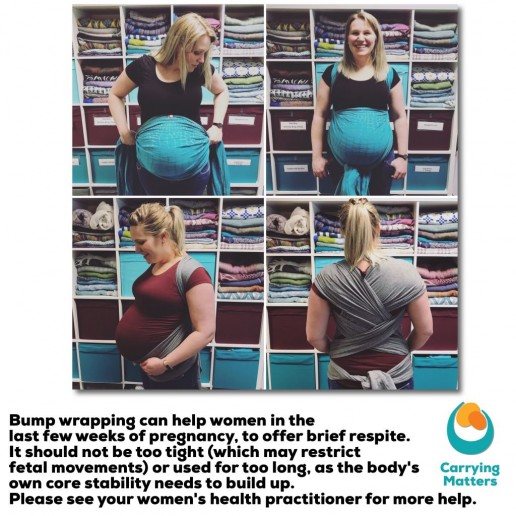


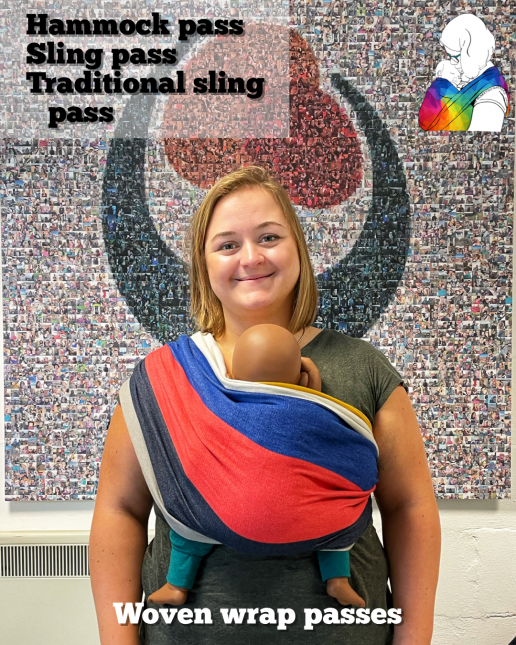
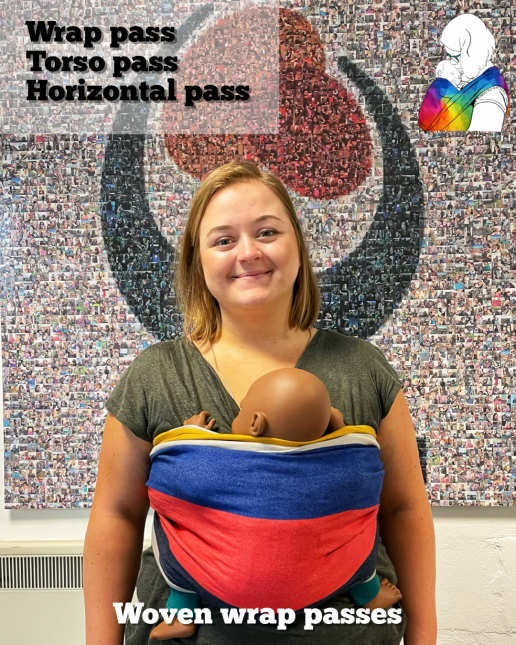
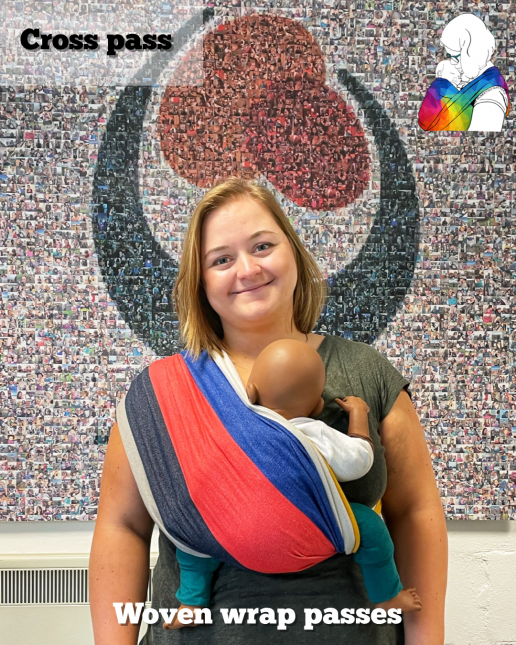
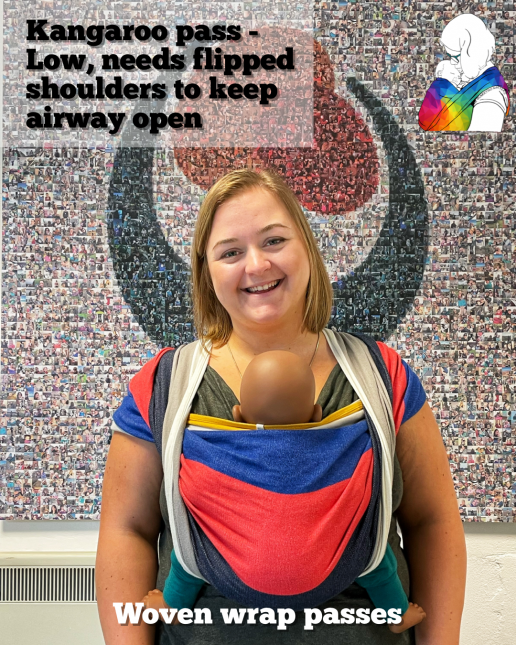
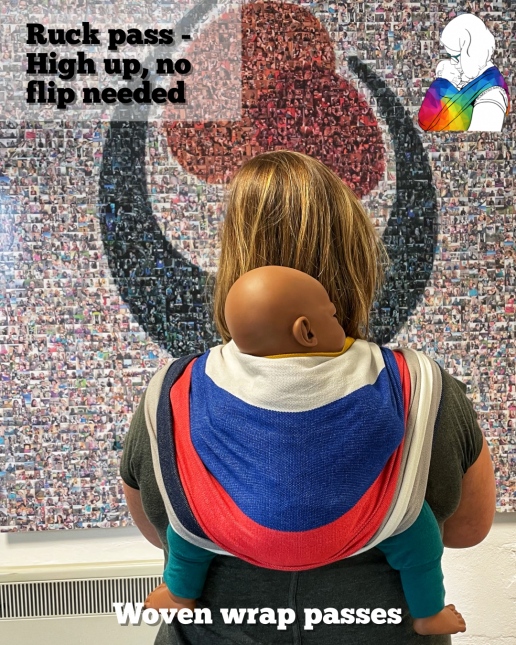
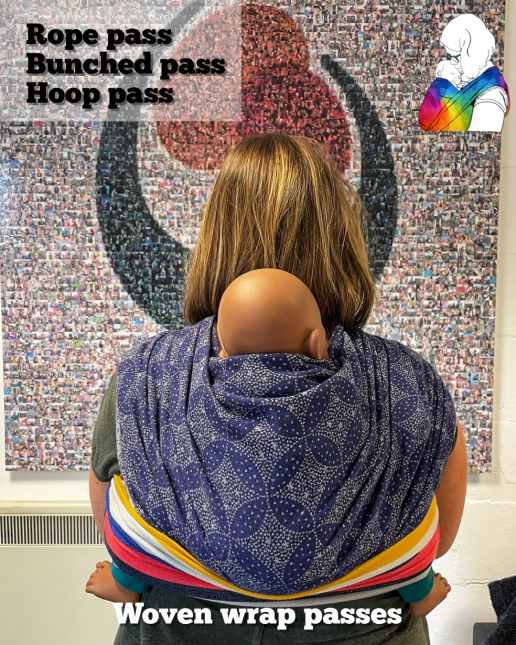
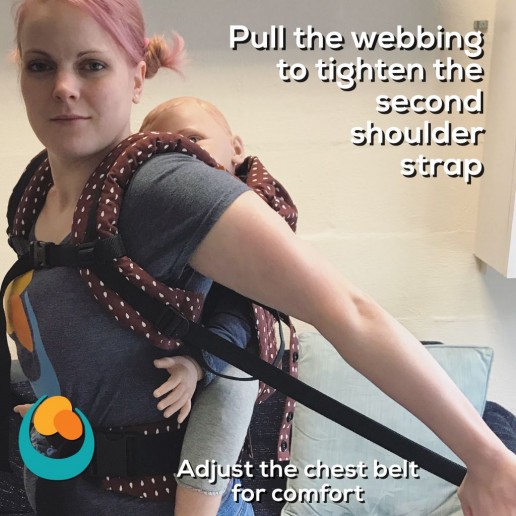
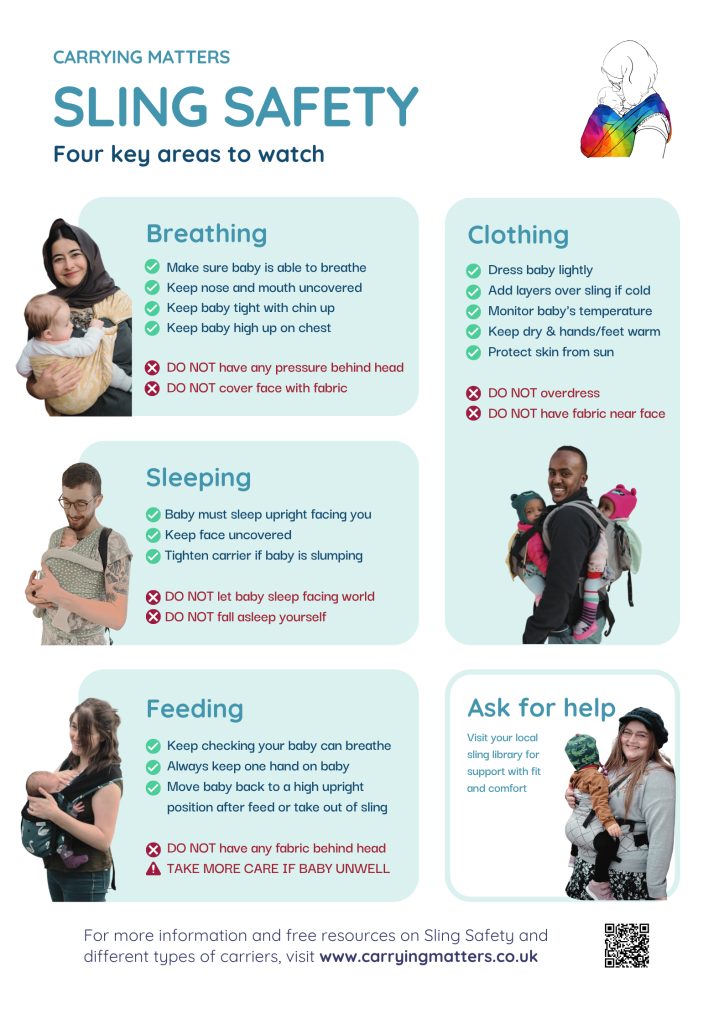
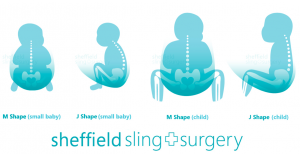
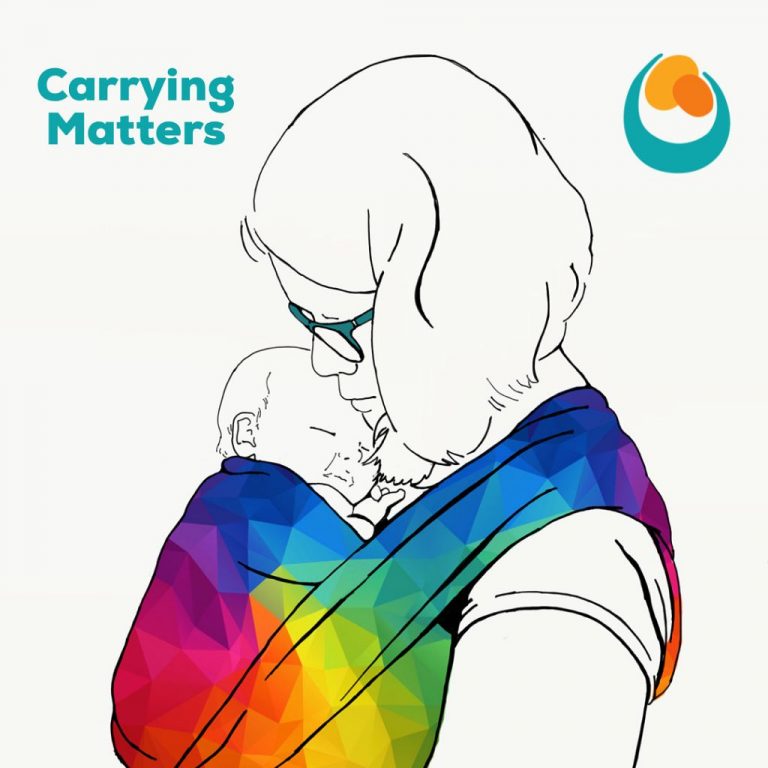
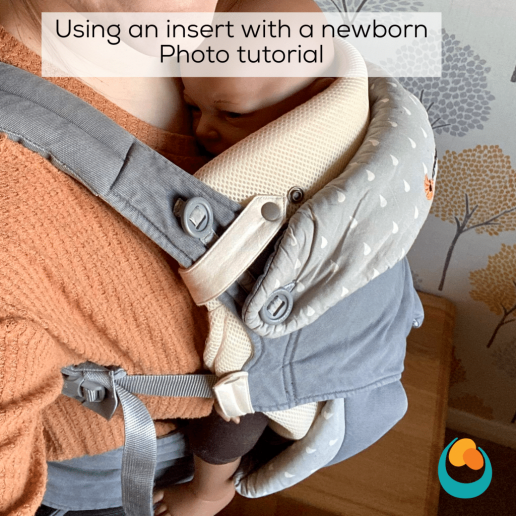
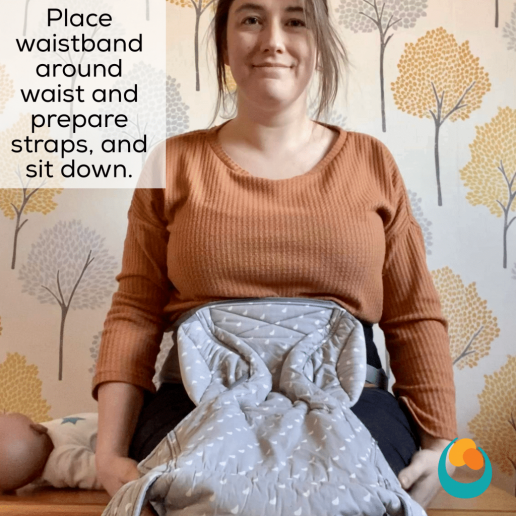
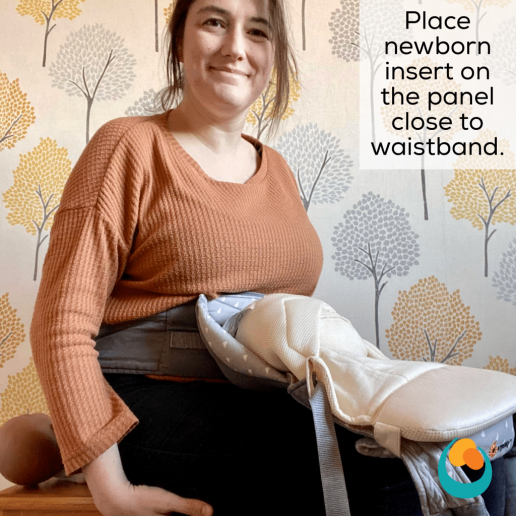
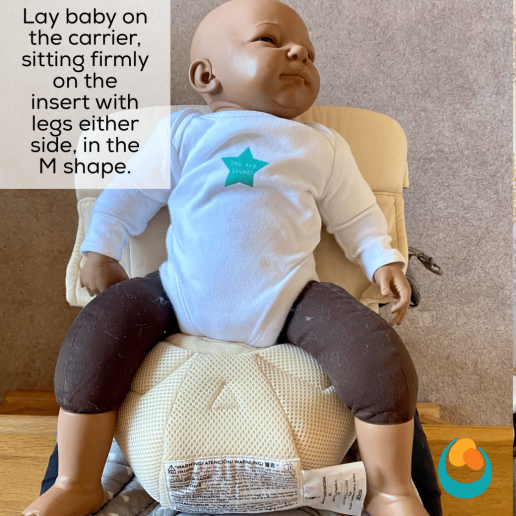
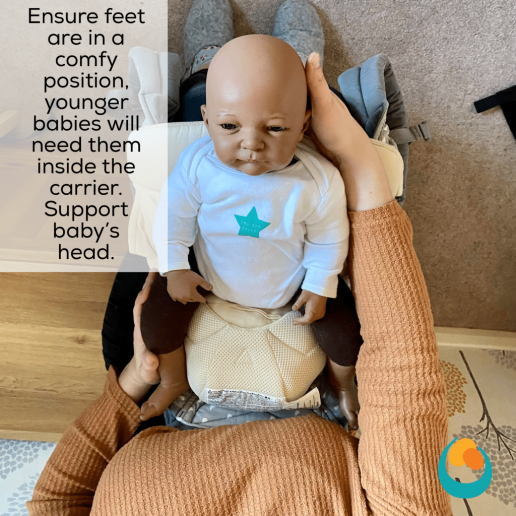
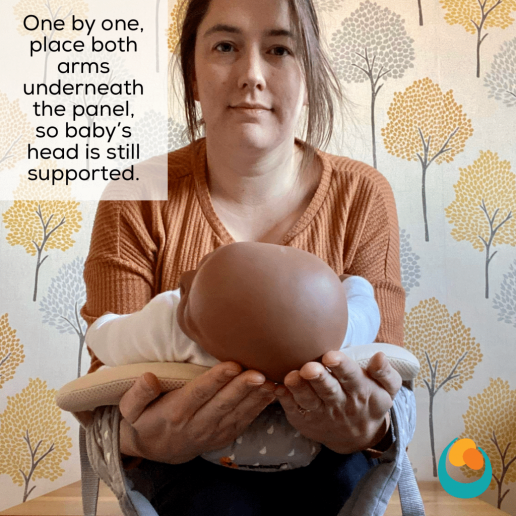
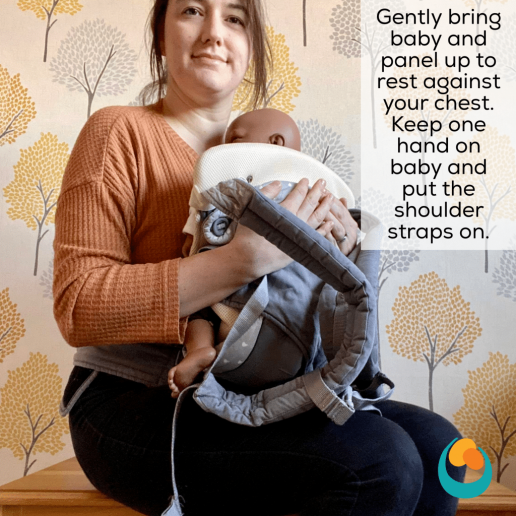
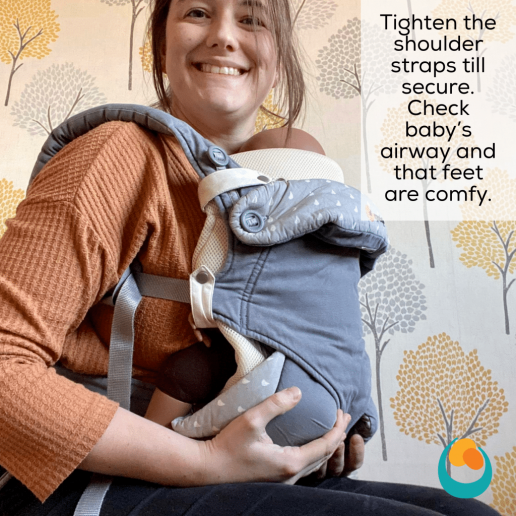
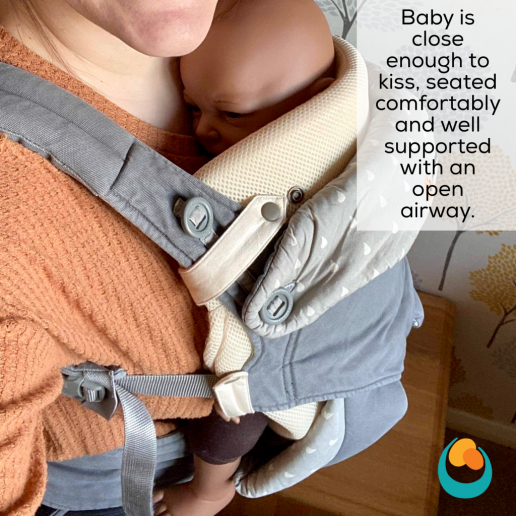
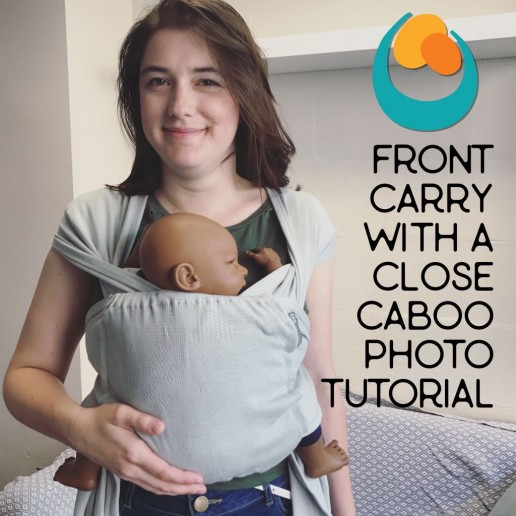
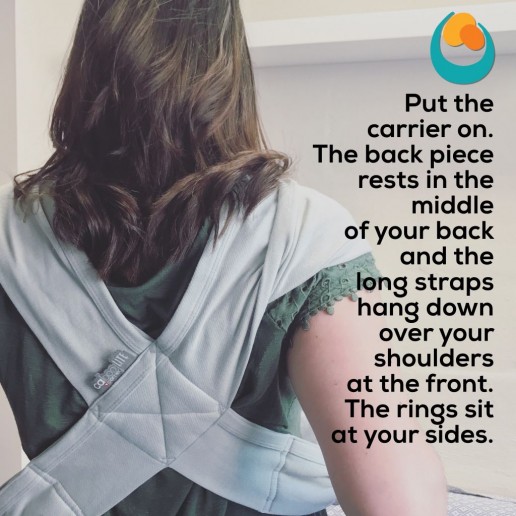
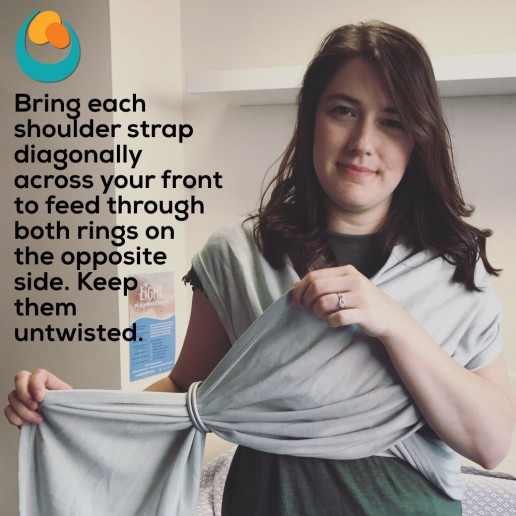
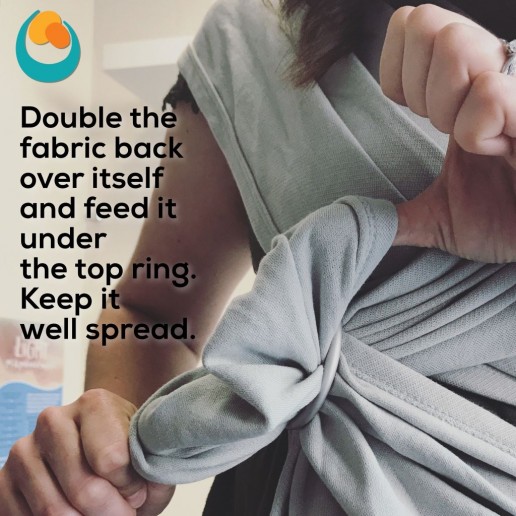
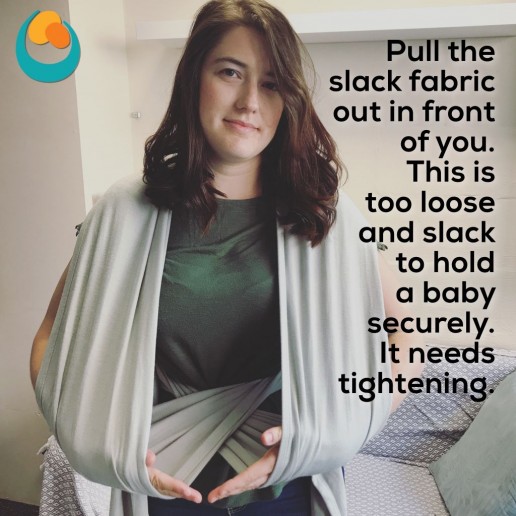
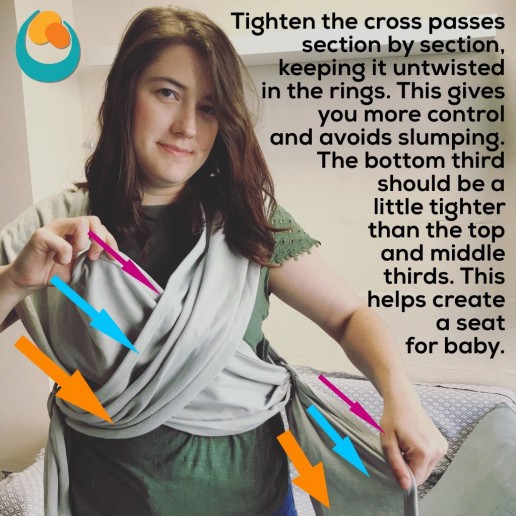
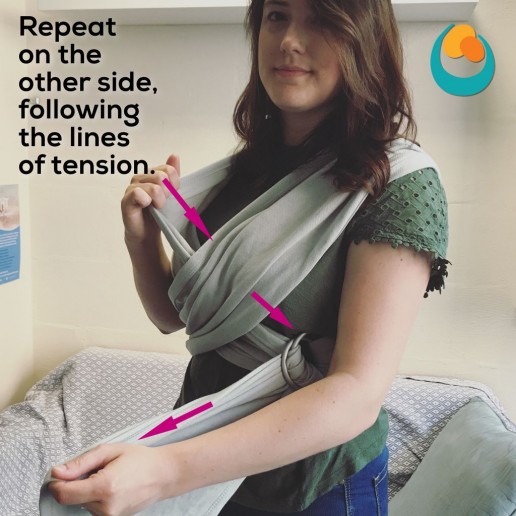
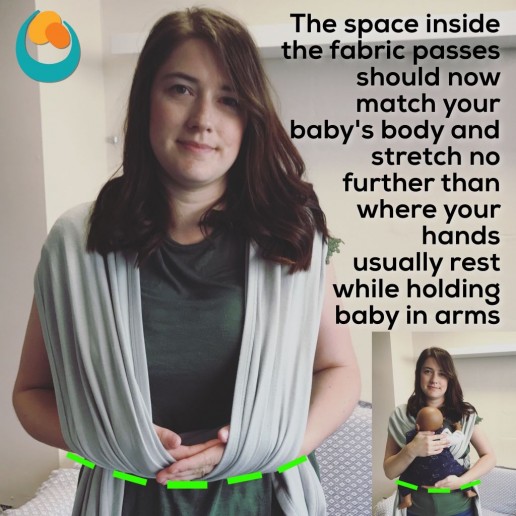
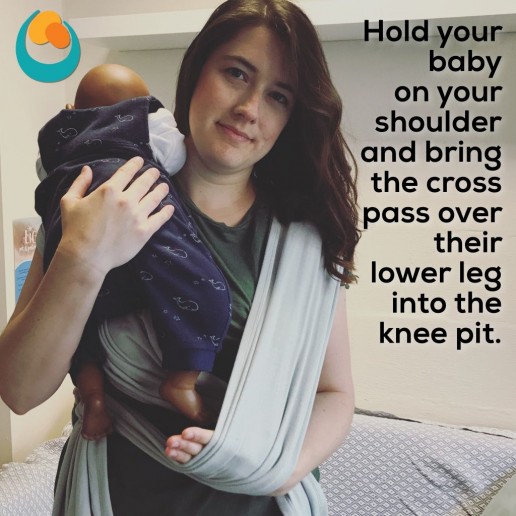
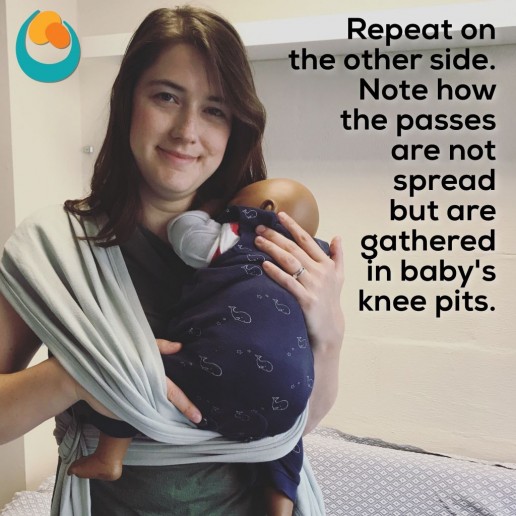
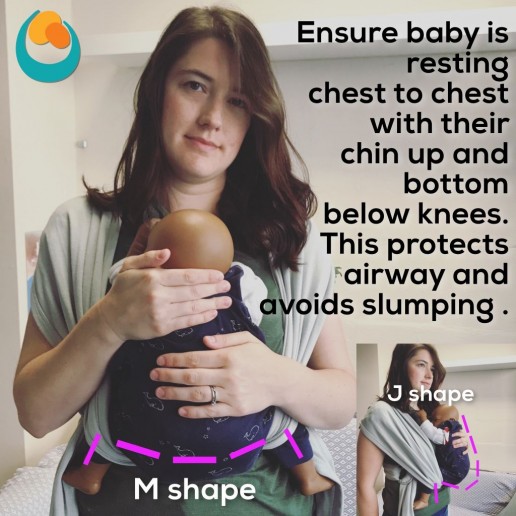
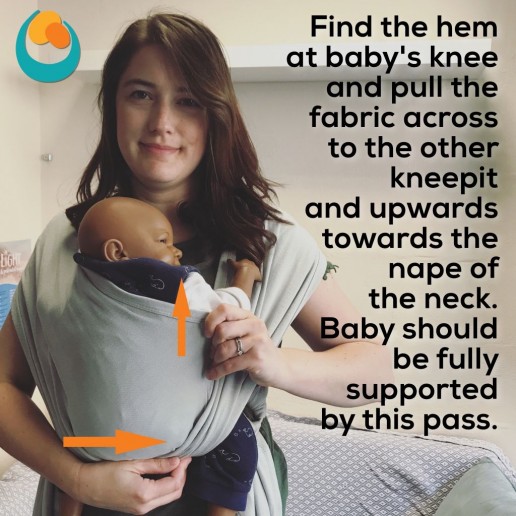
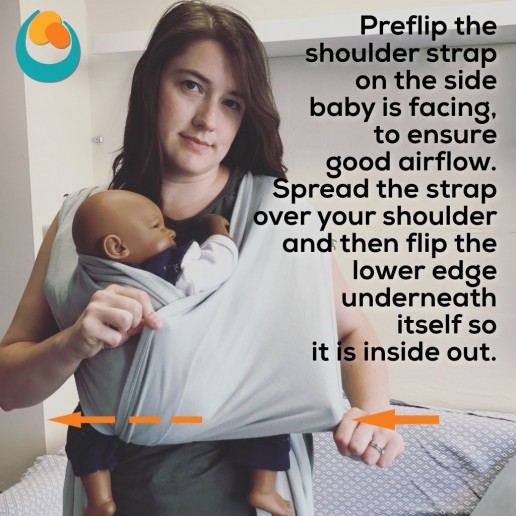
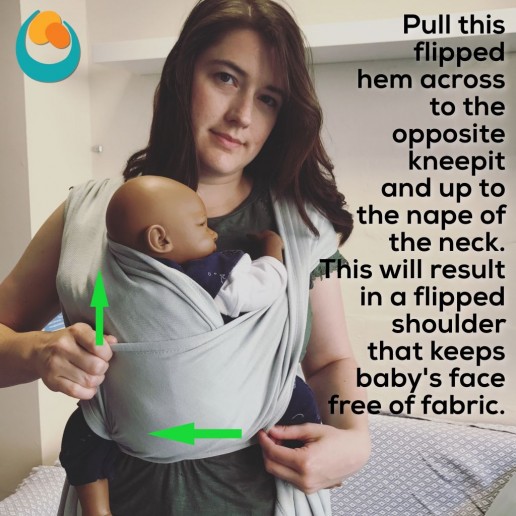
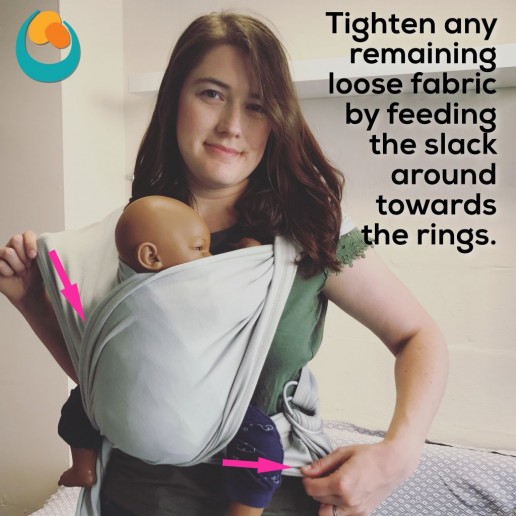
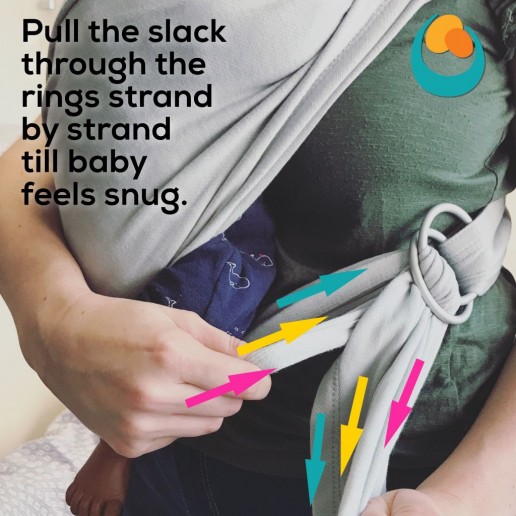
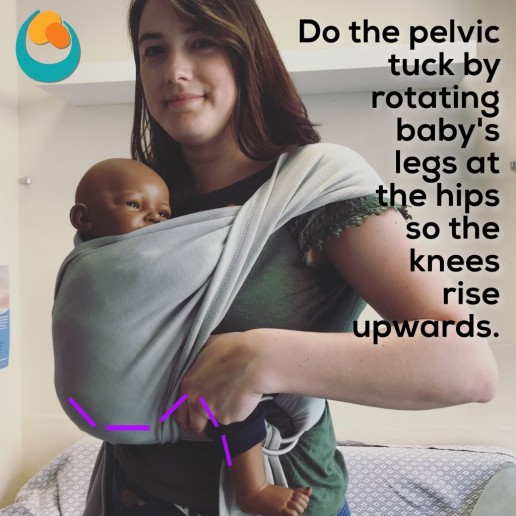
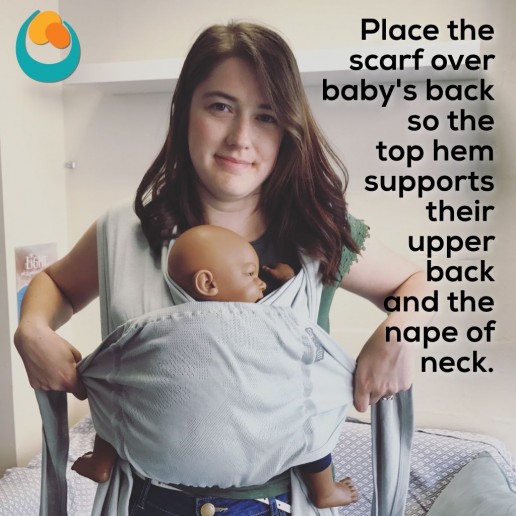
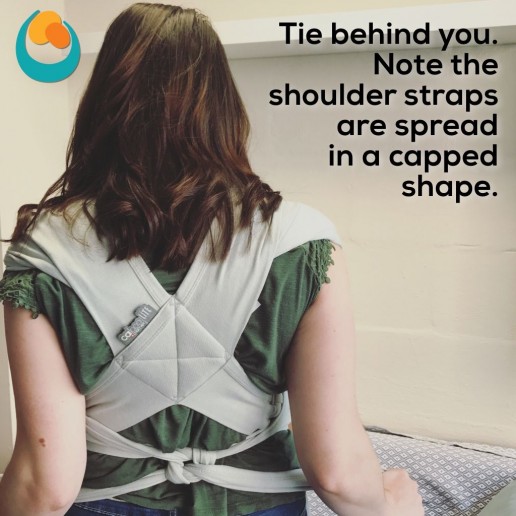
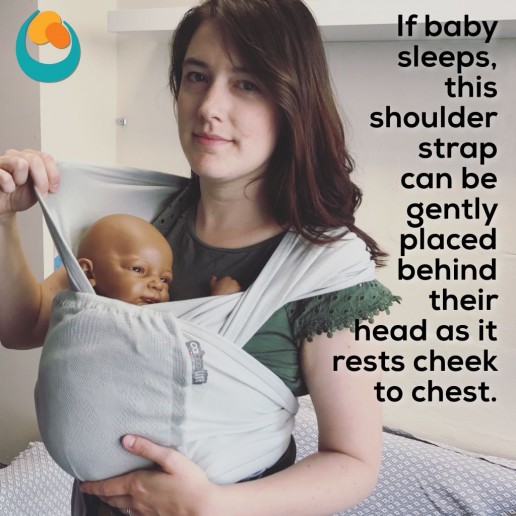
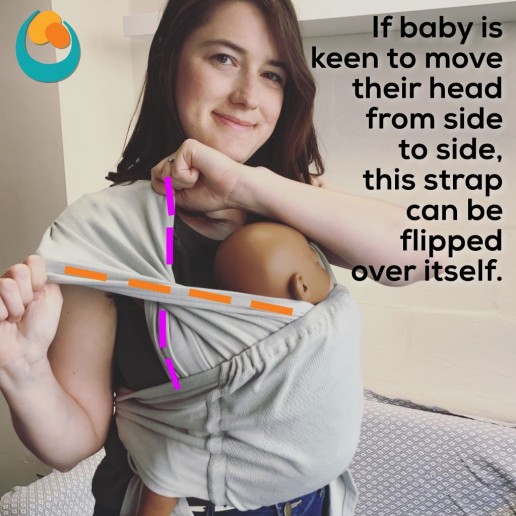

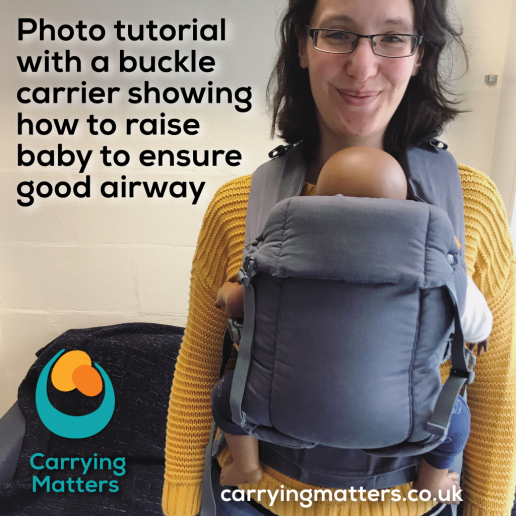
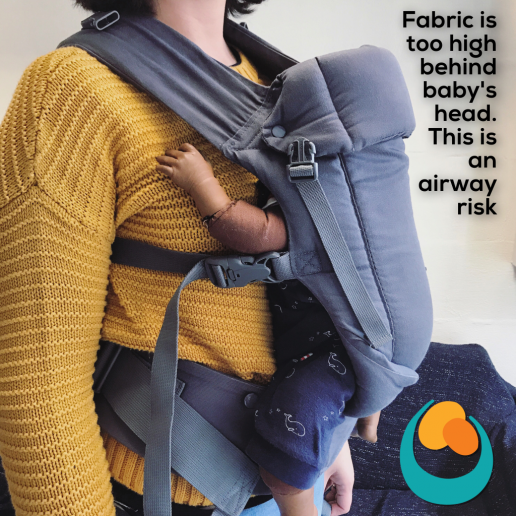
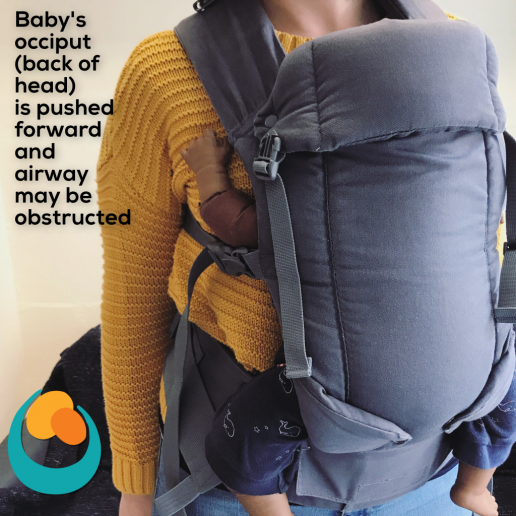
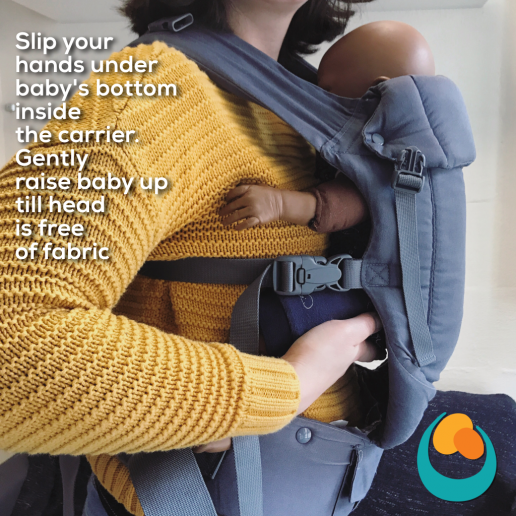
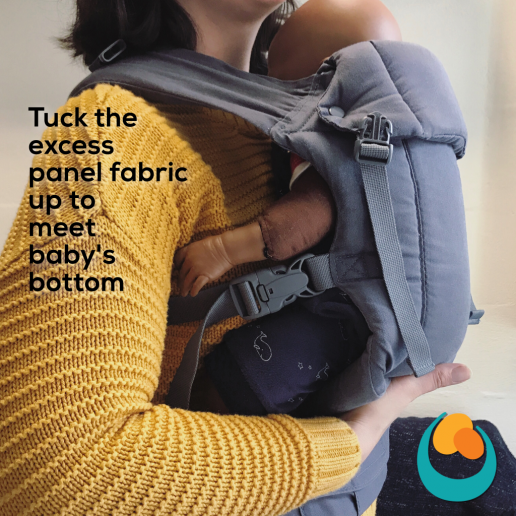
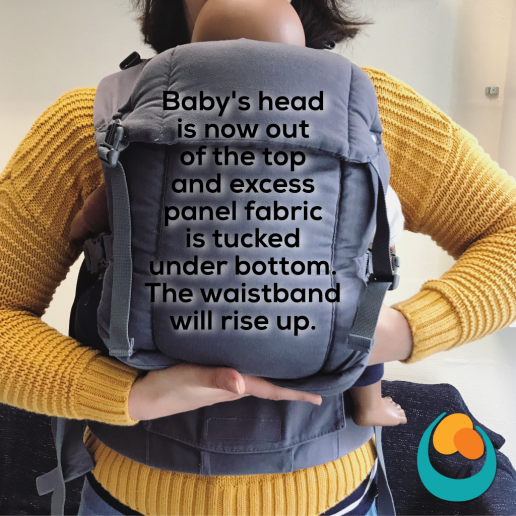
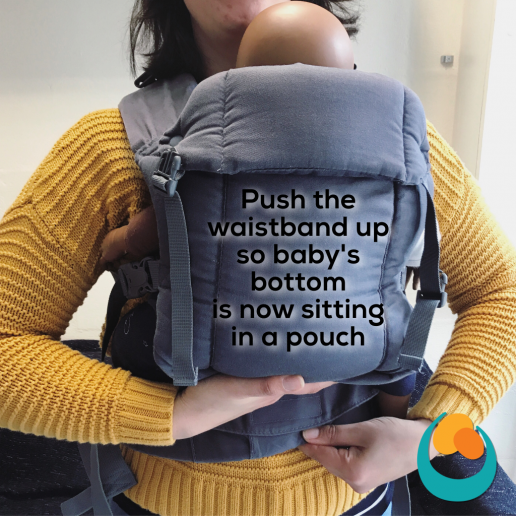
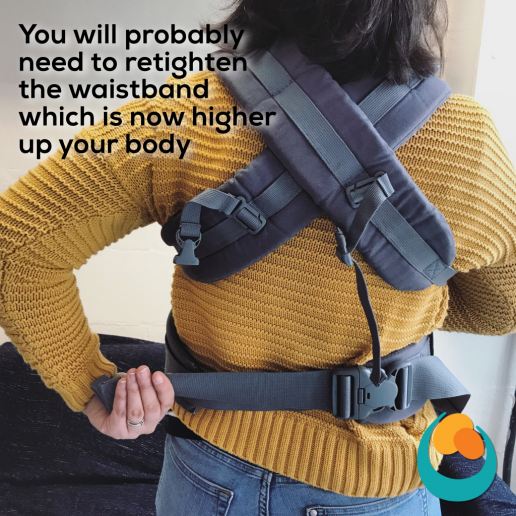
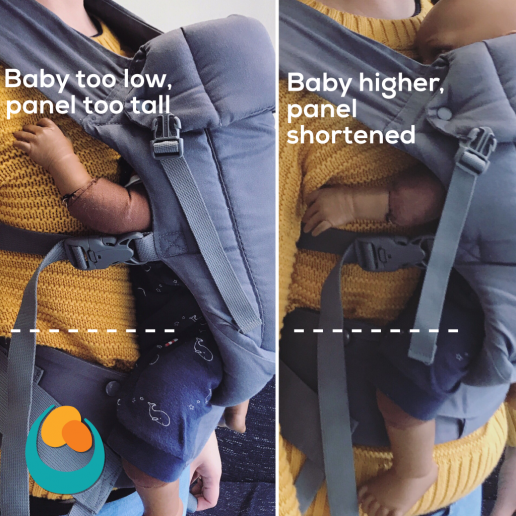
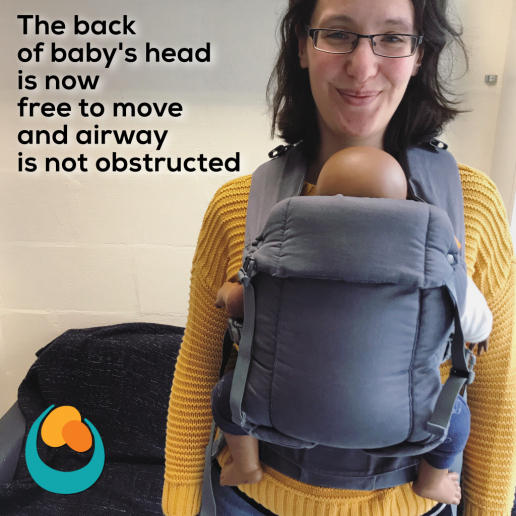
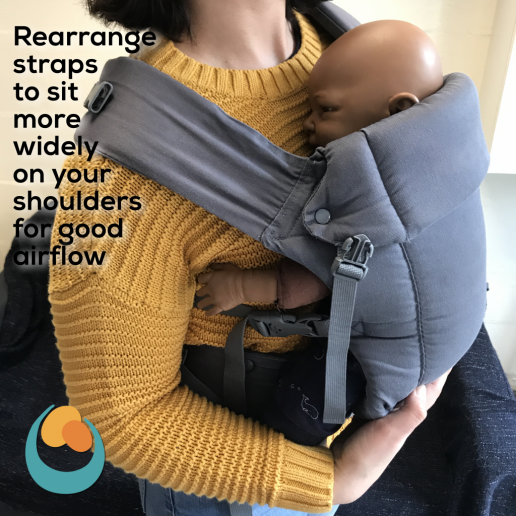
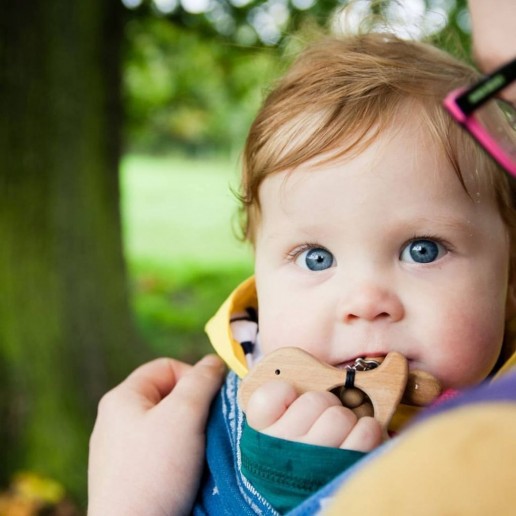
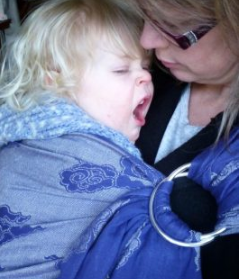
 Get confident with a demo doll first. Sling libraries and sling consultants are usually well stocked with weighted demo dolls which will allow you to figure out how to use the sling safely (remember the
Get confident with a demo doll first. Sling libraries and sling consultants are usually well stocked with weighted demo dolls which will allow you to figure out how to use the sling safely (remember the 
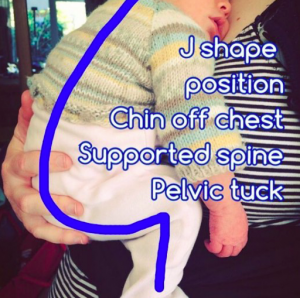
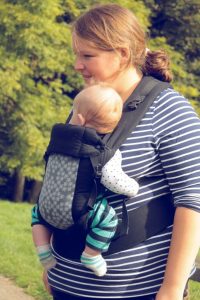 Remember that your baby still wants to experience the world even while carried, as they do when playing on your lap or on the floor. Help them to be able to see a little, in a way that is appropriate for their age and still respectful of growing spines and hips. A carrier that has straps or fabric that comes close to the face may be irritating (do remember that babies grow taller, and many carriers can be adjusted to ensure faces and heads not obscured). Make sure that there is some activity going on - we all know about the sway we do to settle babies when carried in arms, and how often we shift them around, or the rocking/pushing of the pram - this gives a child some sensory input, rather than remaining still. I often encourage parents to go for a short walk round the block when they have just put a sling on with their baby - the motion and movement to get out of the house and the fresh air and change of scenery usually works wonders and parents come back with happier babies. Of course, once the parent is standing still again, and baby is bored with the reduced activity, he will protest!
Remember that your baby still wants to experience the world even while carried, as they do when playing on your lap or on the floor. Help them to be able to see a little, in a way that is appropriate for their age and still respectful of growing spines and hips. A carrier that has straps or fabric that comes close to the face may be irritating (do remember that babies grow taller, and many carriers can be adjusted to ensure faces and heads not obscured). Make sure that there is some activity going on - we all know about the sway we do to settle babies when carried in arms, and how often we shift them around, or the rocking/pushing of the pram - this gives a child some sensory input, rather than remaining still. I often encourage parents to go for a short walk round the block when they have just put a sling on with their baby - the motion and movement to get out of the house and the fresh air and change of scenery usually works wonders and parents come back with happier babies. Of course, once the parent is standing still again, and baby is bored with the reduced activity, he will protest!